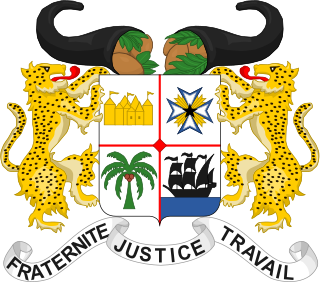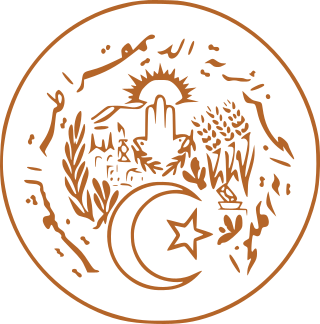
Parliamentary elections were held in the People's Republic of the Congo on 24 June 1973, concurrent with a constitutional referendum. The country was a one-party state at the time, with the Congolese Party of Labour as the sole legal party. As such, it won all 115 seats in the People’s National Assembly. Voter turnout was 83.2%.

A constitutional referendum was held in the Republic of Dahomey on 5 January 1964. The main issues were changing the system of government to a presidential system, scrapping term limits for the president, and having a unicameral parliament. The referendum passed with 99.86% of voters approving the changes. Turnout was 92.1% of the 1,051,614 registered voters.

Parliamentary elections were held in the Republic of Dahomey on 11 December 1960. The result was a victory for the Dahomeyan Unity Party (PDU), a merger of the Dahomeyan Democratic Rally and the Dahomey Nationalist Party, which won all 60 seats. Voter turnout was 71.0%.

Parliamentary elections were held in Rwanda on 25 September 1961 alongside a referendum on the country's monarchy. The result was a victory for MDR-Parmehutu, which won 35 of the 44 seats in the Legislative Assembly. Voter turnout was 95.6%.

A constitutional referendum was held in the People's Republic of the Congo on 24 June 1973. The new constitution was approved by 76.7% of voters with an 83.1% turnout.

General elections were held in Togo on 9 April 1961, alongside a constitutional referendum. It was the first time the President had been directly elected, and Prime Minister Sylvanus Olympio of the Party of Togolese Unity was the only candidate. He was elected unopposed, with the PUT won all 52 seats in the National Assembly. Voter turnout was 90.0%.

A referendum on a new constitution was held in Liberia on 3 July 1984. It was approved by 98.6% of voters, with a turnout of 82.2%. The new constitution came into force on 6 January 1986, following the 1985 general elections.

A referendum on Hosni Mubarak's candidacy for President was held in Egypt on 13 October 1981, following the assassination of President Anwar Sadat on 6 October. Mubarak was elected with 98.5% of the vote. Voter turnout was reported to be 81.1%.

A referendum on the enrichment of the National Charter was held in Algeria on 16 January 1986. The changes were approved by 98.3% of voters with a turnout of 95.9%.

Parliamentary elections were held in Algeria on 20 September 1964. The country was a one-party state at the time, with the National Liberation Front as the sole legal party. As a result, the election took the format of a yes or no vote on the FLN. Voter turnout was 85%.

A presidential election was held in the United Arab Republic on 15 March 1965. The election took the form of a referendum on the candidacy of Gamal Abdel Nasser, who ran unopposed. He won with almost seven million votes, and only 65 against. Voter turnout was 98.5%.

A referendum on the 30 March Program was held in the United Arab Republic on 2 May 1968. It was approved by 100% of voters, with only 798 votes against. Voter turnout was 98.2%.

A referendum on the Federation of Arab Republics was held in Egypt on 1 September 1971, alongside simultaneous referendums in Libya and Syria. It was approved by 99.96% of voters, with a turnout of 98.1%.

A constitutional referendum was held in Egypt on 11 September 1971. The changes to the constitution were approved by 99.98% of voters, with a turnout of 95.1%.

A referendum on the October Paper was held in Egypt on 15 May 1974. It was approved by 99.9% of voters, with a turnout of 97.9%.

A referendum on "the protection of national unity" was held in Egypt on 10 February 1977. It was approved by 99.4% of voters, with a turnout of 96.7%.

A referendum on "the protection of national unity and social peace" was held in Egypt on 21 May 1978. It was approved by 98.3% of voters.

A referendum on "the protection of national unity" was held in Egypt on 10 September 1981. It was approved by 99.5% of voters.

A referendum on the new constitution of France was held in Gabon on 28 September 1958 as part of a wider referendum held across the French Union. The new constitution would see the country become part of the new French Community if accepted, or result in independence if rejected. It was approved by 92.6% of voters, with a 78.7% turnout.












